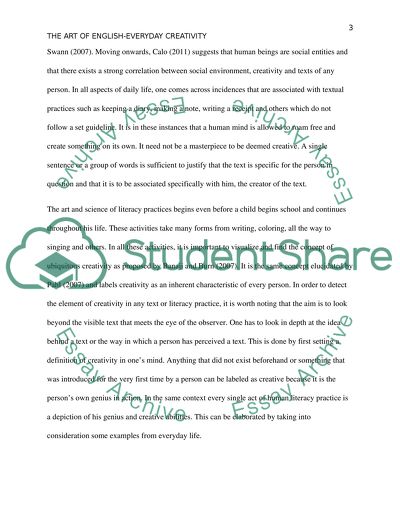Cite this document
(“The Art of English - Everyday Creativity Essay Example | Topics and Well Written Essays - 2000 words”, n.d.)
The Art of English - Everyday Creativity Essay Example | Topics and Well Written Essays - 2000 words. Retrieved from https://studentshare.org/english/1465977-the-art-of-english-everyday-creativity
The Art of English - Everyday Creativity Essay Example | Topics and Well Written Essays - 2000 words. Retrieved from https://studentshare.org/english/1465977-the-art-of-english-everyday-creativity
(The Art of English - Everyday Creativity Essay Example | Topics and Well Written Essays - 2000 Words)
The Art of English - Everyday Creativity Essay Example | Topics and Well Written Essays - 2000 Words. https://studentshare.org/english/1465977-the-art-of-english-everyday-creativity.
The Art of English - Everyday Creativity Essay Example | Topics and Well Written Essays - 2000 Words. https://studentshare.org/english/1465977-the-art-of-english-everyday-creativity.
“The Art of English - Everyday Creativity Essay Example | Topics and Well Written Essays - 2000 Words”, n.d. https://studentshare.org/english/1465977-the-art-of-english-everyday-creativity.


